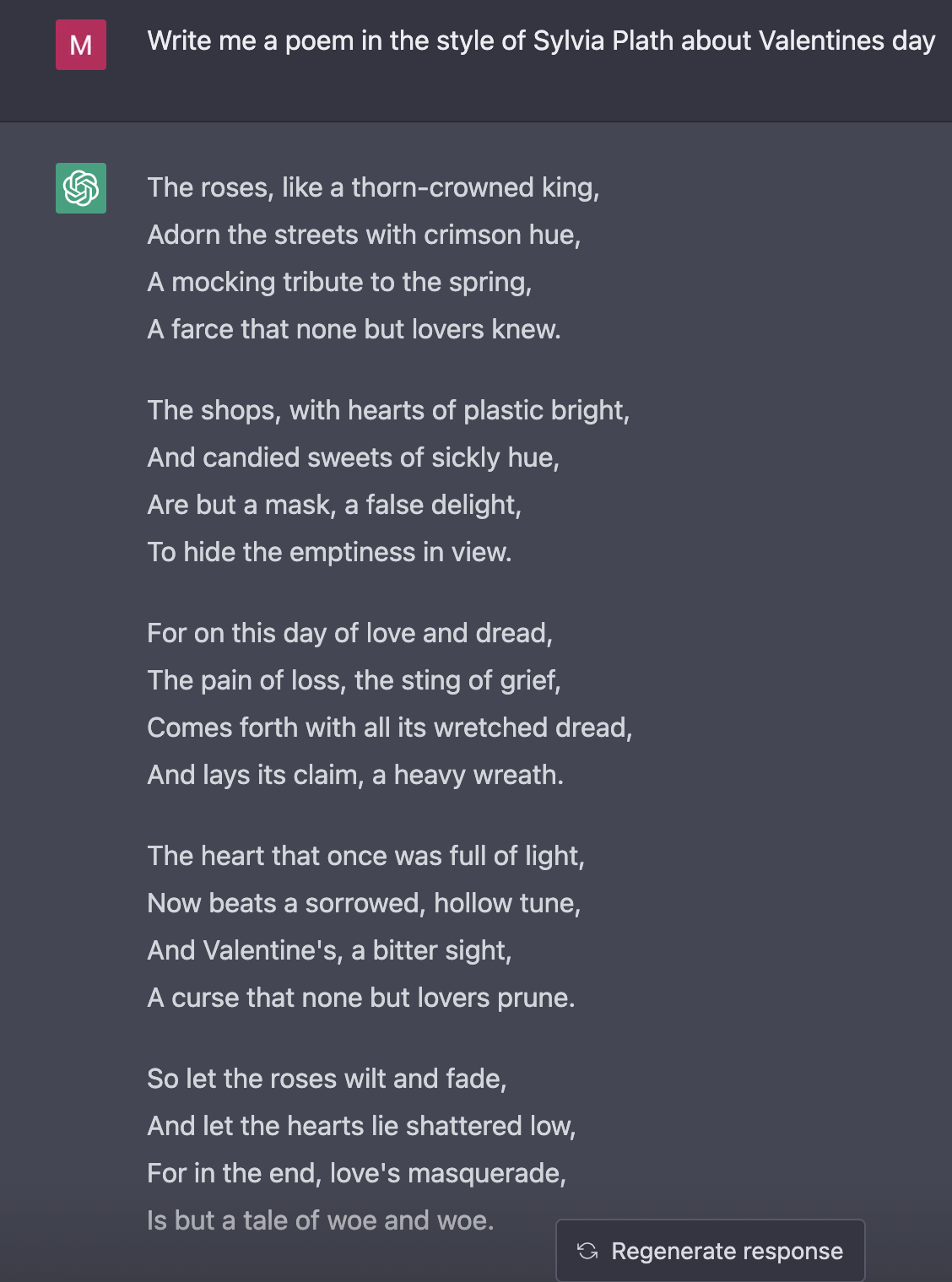I used ChatGPT to make a Valentine's Day card and poem - and the results were horrific
I'll be single forever
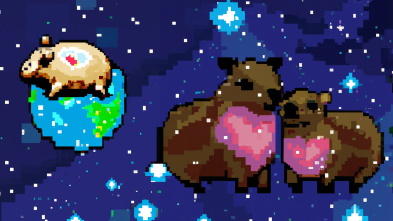
I'm a professional journalist with a deep scepticism of how emotionless AI could be used in the arts, but I decided to put my doubts to one side and see if the likes of ChatGPT and DALL-E could help me whip up some last-minute Valentine's Day inspiration. After all, isn't using robots to save our disorganised butts the real meaning of Valentine's Day?
Of course it is, so I decided to see if I could get a romantic love poem and some cover art ready for a Valentine's Day card using artificial intelligence tools in the form of the ChatGPT chatbot, and the DALL-E AI art generator. And the results were... horrific.
I have to start by reiterating that I have never used AI tools before today, so do bear with me if I sound a little noobish. I tried to start with Open Ai's ChatGPT to get my poem up off the ground, but I got stonewalled by a page telling me that the site is at capacity and I’ll need to wait an unforeseeable amount of time. Devastating.
So, while I waited, I hopped on over to DALL-E 2 (also created by Open AI) and started slotting in some prompts to get the perfect card. When you sign up for DALL-E 2 you’re given a few (very cool) examples of what kind of images you can generate through the site and the kind of styles you can have your images pop out as, like ‘cyberpunk’ or ‘synth wave’.
I started with my favourite classic novella, The Great Gatsby. After putting in the ‘Great Gatsby Valentines Day Card’ I got a lot of weird results, with some basic art and very messed up lettering. I began to put in as many specific prompts as I could, and to be fair I did get some very beautiful images in the end.
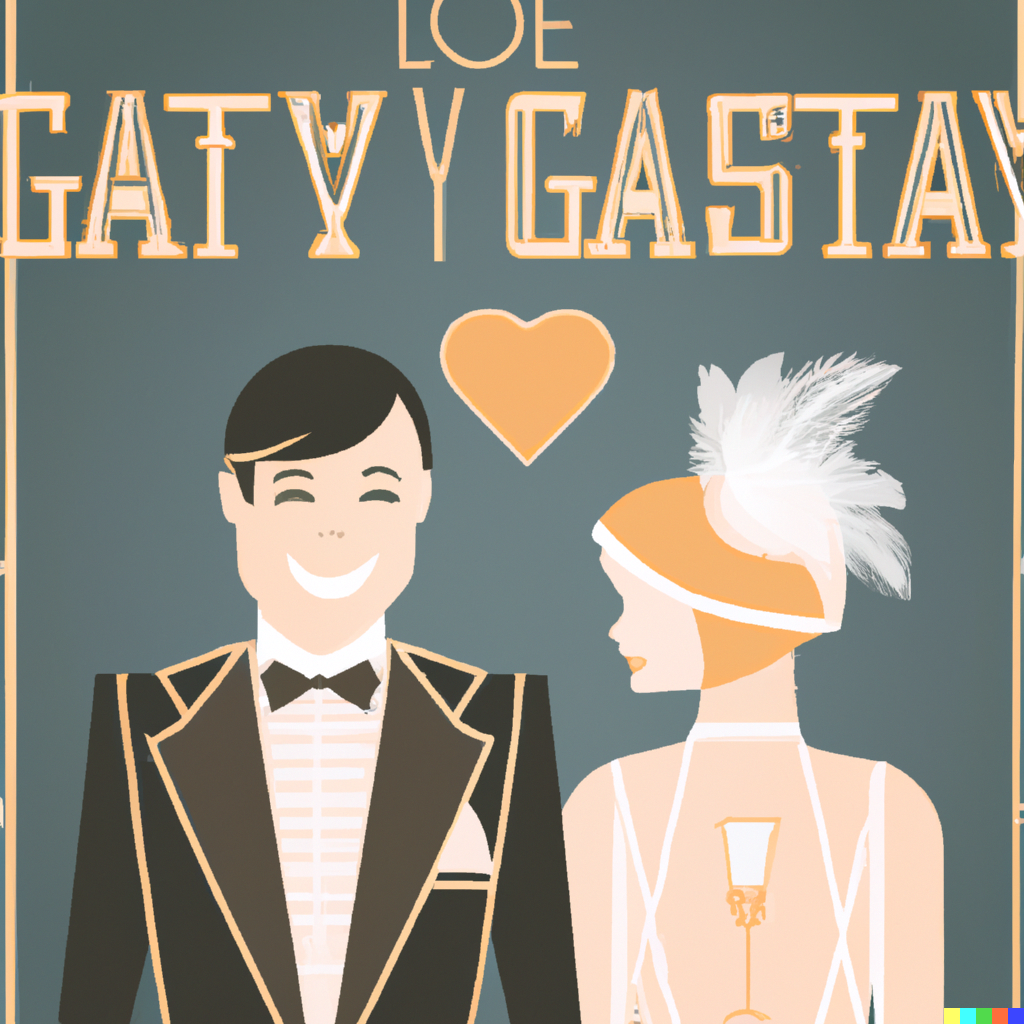
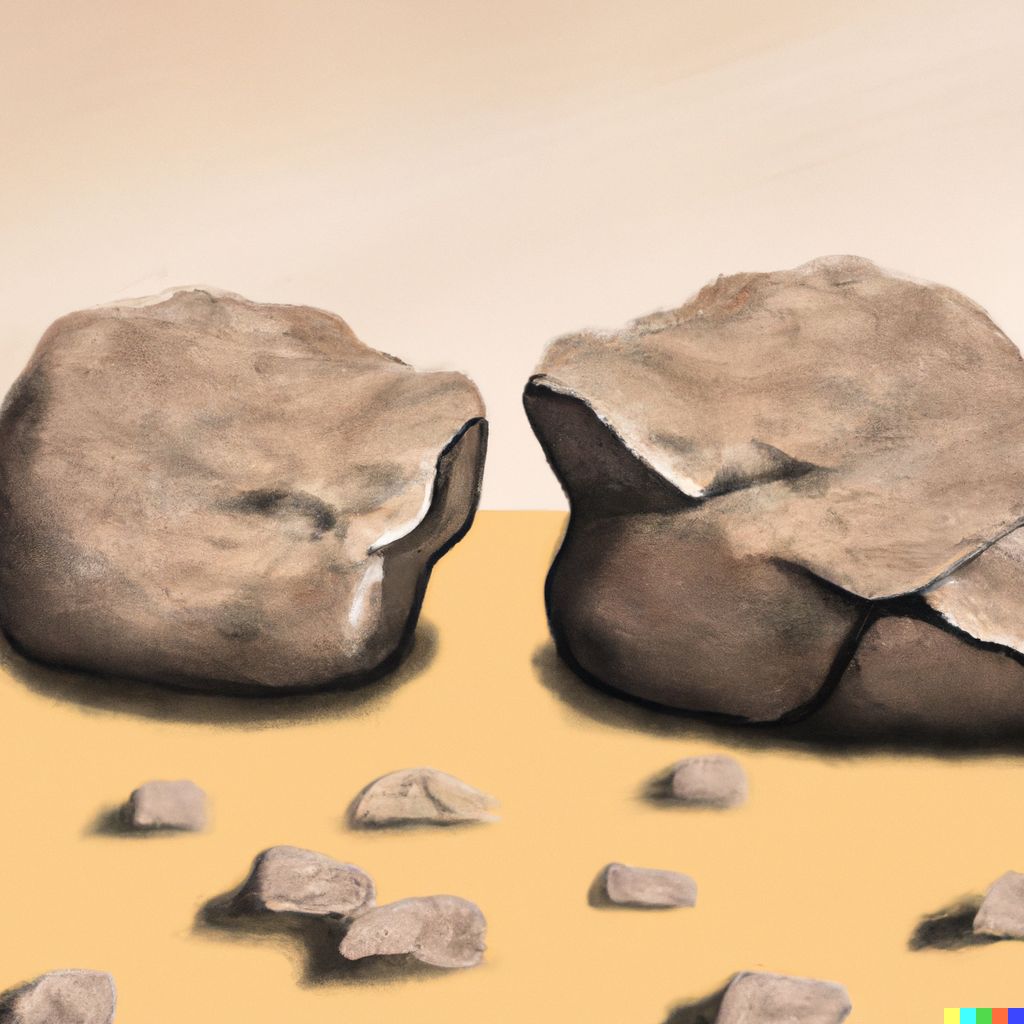
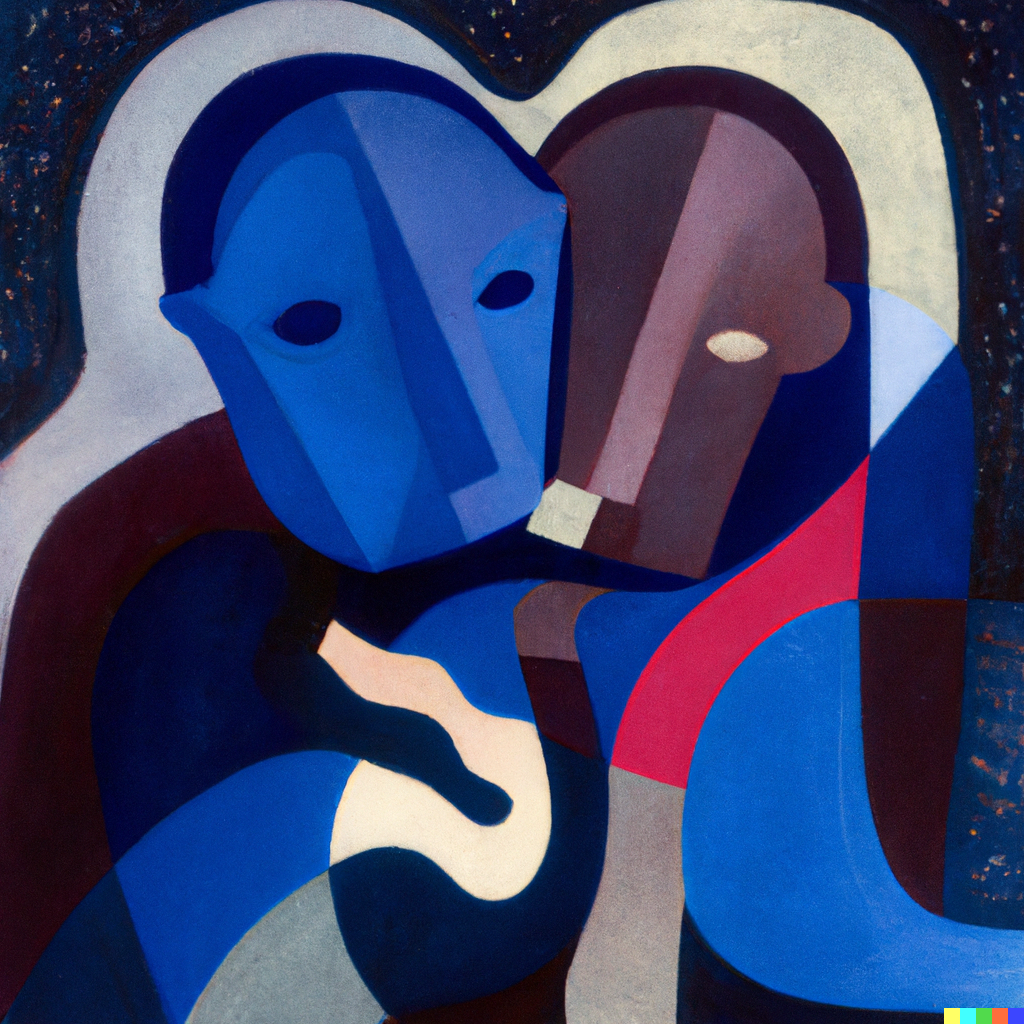
I also put in a few silly prompts, my favourite being the synth-wave photo of two dogs sharing a milkshake, a digital art image of what Valentine's Day looks like at an alien high school, photographs of rocks arguing, and a medieval woman swiping through Tinder.
I wasn't as satisfied with what I was getting compared to the examples I was being shown, however, which was rather frustrating. The example art was always so pretty and clean and yet mine felt like a bad photoshop job, and no matter how specific or vague I was, I never really got anything that came close to the quality of the example images on the DALL-E 2 website. Maybe I’m too new to this?
Sign up for breaking news, reviews, opinion, top tech deals, and more.
Once I decided on the cover of my Valentine's Day card (the dogs, of course) I went back to ChatGPT and after refreshing a few times every few minutes, I finally got it! The welcome was warm and full of clear instructions, super helpful for me as I had no idea where to start.
There’s an incredible variety of things you can use ChatGPT for, from solving equations, brainstorming ideas, debugging code and in this case coming up with poetry and rejecting tech journalists on Valentine's Day.

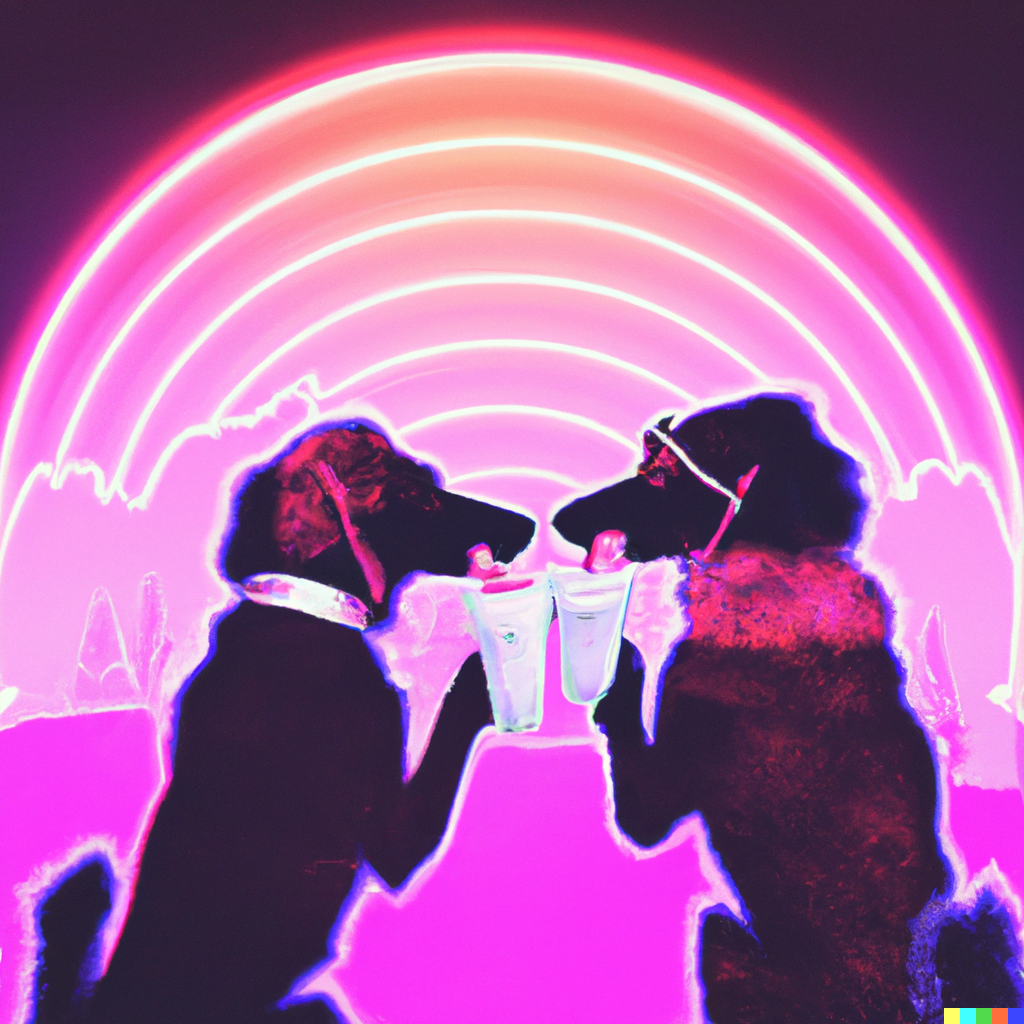
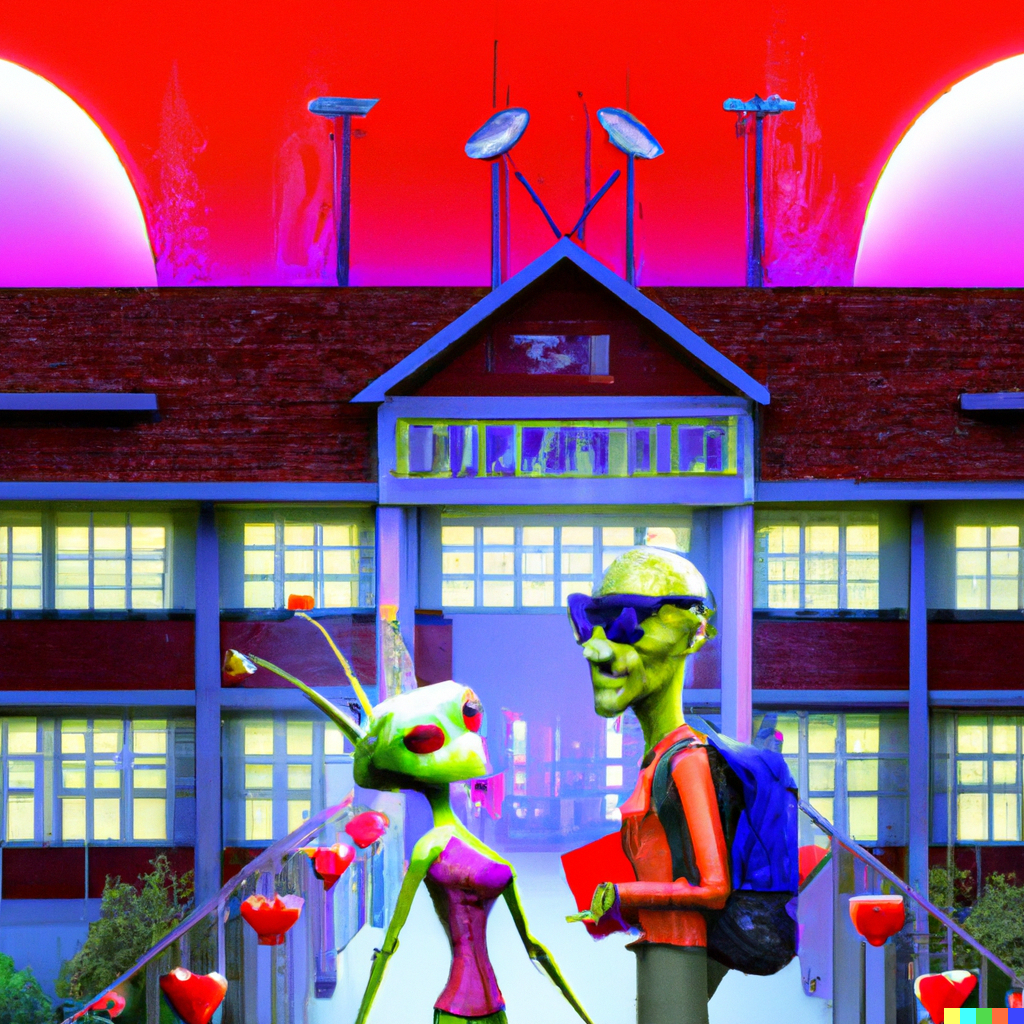

As I said before, I do have some reservations about inserting AI into the world of art, be it in image-based art or the written form, but I will say being able to create poetry in the style of poets that are no longer with us was impressive, and oddly moving. They may not be ‘accurate’, but reading romantic poetry by my favourite poets Maya Angelou and Sylvia Plath felt like reading their work for the very first time.
Of course, I also tried to get some sillier Valentine's Day poems, like a love poem written from the point of view of a cellphone, a poet to a vampire, or even a little haiku about love between two trees! Which of course became the poem of the card.
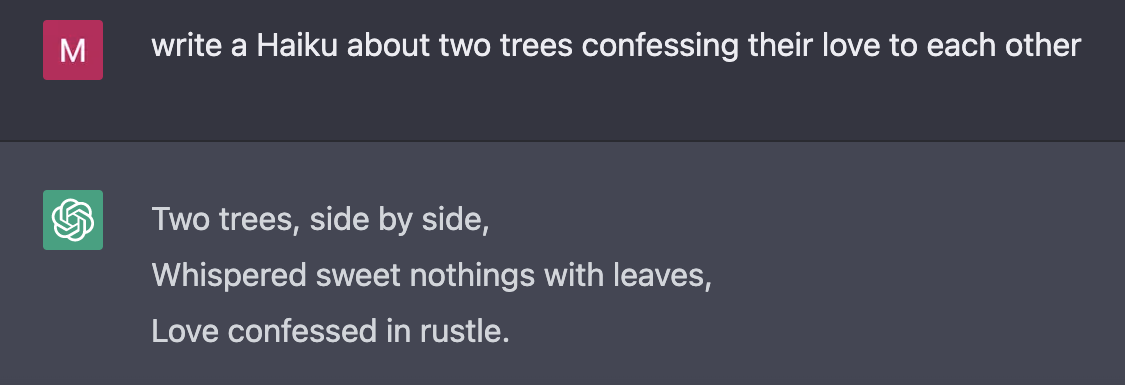
How deep is your machine learning?
All of these results relied on prompts from a human (me), so I wondered what would happen if I asked ChatGPT to describe a romantic scene, and then used that as a prompt for DALL-E to create the ultimate AI romantic masterpiece.
The results were... horrific.
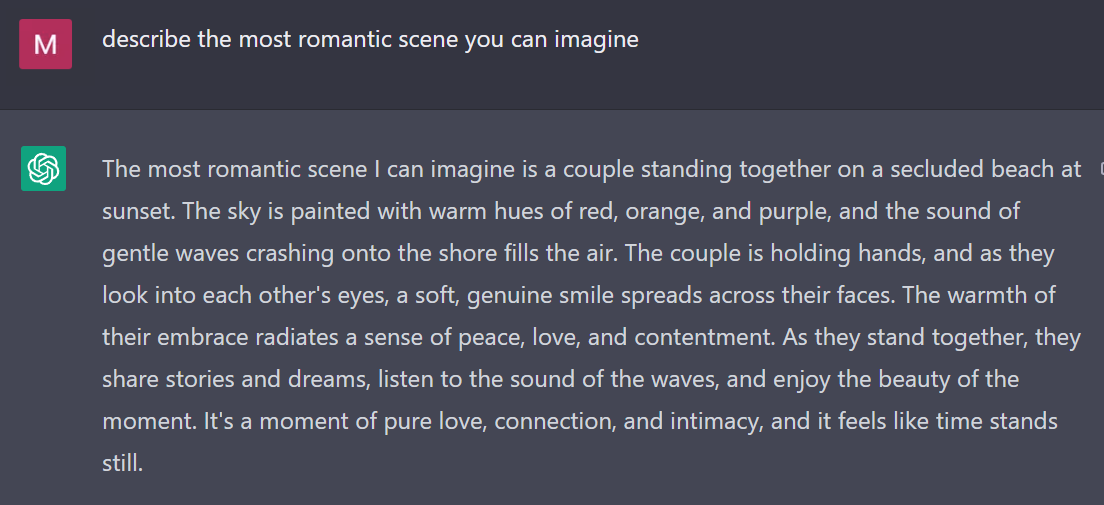
First up, I asked ChatGPT to describe the most romantic scene it could imagine. As you can see from the screenshot above, the results were OK. Apart from a few grammatical errors, the biggest crime was how cliched, and even (dare I say it) cheesy the scene was.
Perhaps I was being a bit unfair, after all, asking an AI to imagine something is an impossible task. Machines can't imagine, all they can do is collect snippets of human-created content and mash them together into a hopefully coherent sentence or two. Romantic, huh?
Without imagination, however, any 'art' is fundamentally hollow, hence the cliched nature of the scene ChatGPT produced.
Still, it was essentially what I asked for, and I've read far worse in romantic novels written by humans, so I was keen to see what DALL-E would make of it.
I was not prepared for the horror.
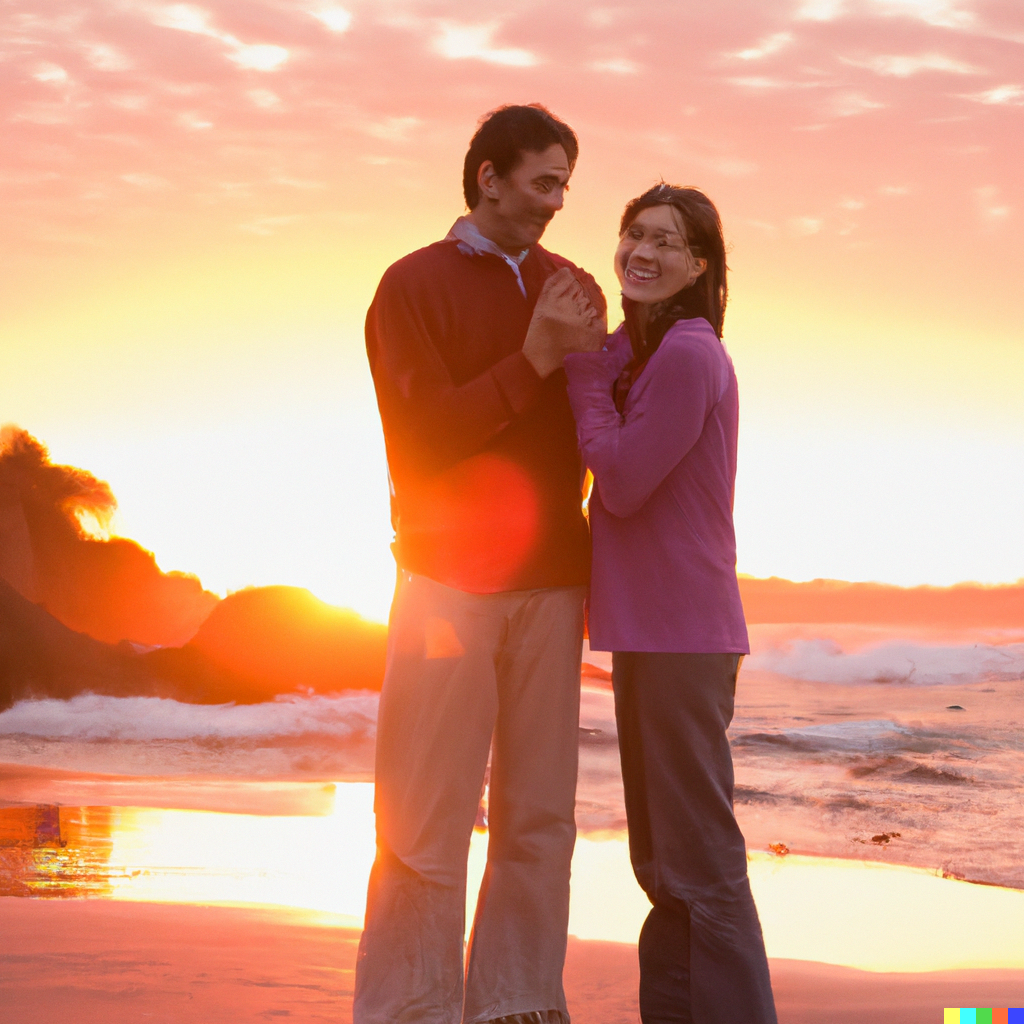
A brief glimpse may seem like a perfectly cheesy photo, similar to ones used for those straight-to-video romantic comedies budget movie producers churn out. But when you look more closely, unnerving details emerge.
There's the couple's faces, which look like they've been created from various other faces all hastily pasted together (which is essentially what happened). Then you notice the man's fingers. So. Many. Fingers.
Even their legs look odd. They're unnaturally long, and for some reason they both seem to be wearing flares.
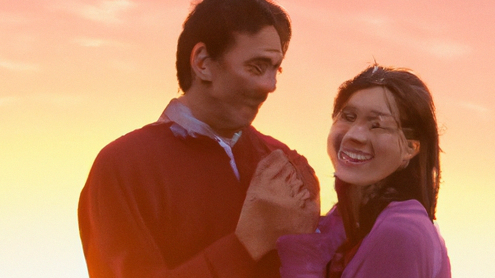
With the most basic human input, AI ended up creating a romantic image that was both cliched and horrifying. I loved it. The object of my affections may not be quite as impressed, however.
Rejected by an AI
Speaking of which, I thought I might as well secure a date for the romantic day and asked the system if it wanted to hang out.. and I got rejected. So I made it write me breakup poems instead.

All you need is love (and some human input)
All in all, I had a fun afternoon playing around with AI and making it burp out art on command. It didn't address my scepticism, but instead gave me a little more of an understanding as to why these are so popular.
However I do think the romantic responses from ChatGPT lack the human touch that forms the core of any romantic expression; happy or sad, elated or mournful. The poetry reads as if it were written by an AI, there's no warmth and it feels rushed. I was happy to see my favorite poets come back, but the limits of AI were clear. This was especially evident when I asked it to describe and draw a romantic scene. Rather than basing it on its own experiences of love, it scoured the internet for other - human - content that it felt fitted the bill. The result was a cliched facsimile of a very human emotion.

Muskaan is TechRadar’s UK-based Computing writer. She has always been a passionate writer and has had her creative work published in several literary journals and magazines. Her debut into the writing world was a poem published in The Times of Zambia, on the subject of sunflowers and the insignificance of human existence in comparison.
Growing up in Zambia, Muskaan was fascinated with technology, especially computers, and she's joined TechRadar to write about the latest GPUs, laptops and recently anything AI related. If you've got questions, moral concerns or just an interest in anything ChatGPT or general AI, you're in the right place.
Muskaan also somehow managed to install a game on her work MacBook's Touch Bar, without the IT department finding out (yet).
